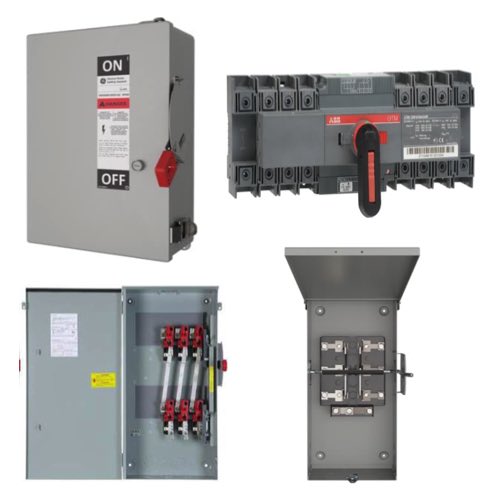ABB Disconnects

RSP Supply carries a complete line of ABB disconnect switches, designed to provide safe, dependable circuit isolation for industrial, commercial, and residential systems. Available in both fusible and non-fusible models, these switches deliver exceptional reliability and protection during maintenance or emergency shutdowns.
Built with compact, high-performance designs, ABB disconnects are ideal for use with air conditioners, water heaters, motors, and power distribution panels. Each unit includes advanced safety features such as door interlocks, shrouded terminals, and padlockable handles - ensuring that maintenance teams can work safely and confidently.
Whether for indoor or outdoor installations, ABB disconnect switches combine durability, flexibility, and safety, making them a trusted solution across manufacturing, renewable energy, and utility applications.
More Information about ABB Disconnects
ABB disconnect safety switches are designed as a high performance, compact solution for commercial and industrial applications. They provide reliable performance and are virtually maintenance free. The high performance disconnects have a compact design with dead-front construction plus, terminal shrouds reduce the risk of touching live parts. The door interlock is where a handle and shaft provide door interlock so that the door cannot be opened with the switch is in the ON position. Handles can be padlocked in the OFF position with up to three padlocks.
FAQs
Q: What is an ABB disconnect switch?
ABB disconnect switches safely isolate electrical circuits during maintenance or emergencies. They’re designed for durability and protection in industrial, commercial, and residential systems.
Q: What’s the difference between a disconnect and circuit protection device?
Disconnects manually remove or restore power, while circuit protection devices like breakers and fuses automatically stop power surges or faults to protect equipment.
Q: Are ABB disconnects suitable for outdoor use?
Yes. ABB offers weatherproof disconnect switches rated for both indoor and outdoor use, ensuring reliable circuit isolation in all conditions.
Q: Do ABB disconnects include safety interlocks?
Yes. Many ABB models feature door interlocks and padlock options to prevent accidental energization and ensure maintenance safety.
Q: Are ABB disconnect switches cost-efficient and flexible?
Yes. ABB disconnects are compact, cost-efficient, and designed for flexible installation across HVAC, water heating, renewable energy, and industrial power systems.
Disconnects vs Circuit Protection
Disconnects
Disconnects are manual devices used to turn power on or off to downstream equipment. They don’t provide surge or overload protection — their main purpose is to isolate power for maintenance or safety. Common in high-voltage and industrial systems, disconnects often include door interlocks and external handles that allow power to be switched safely outside the enclosure.
Circuit Protection
Circuit protection devices, such as breakers and fuses, automatically interrupt power during overcurrent or fault conditions. Fuses must be replaced after a surge, while breakers can be reset. These devices aren’t meant for routine switching but protect equipment from damage.
In most setups, both are used together - the disconnect for manual isolation and the breaker or fuse for automatic protection.
Why Choose ABB Disconnects from RSP Supply?
- Full line of ABB disconnect switches in stock
- Options for fusible and non-fusible configurations
- Compact design and high-performance ratings
- Compliant with industry safety standards
- Expert support and fast nationwide shipping
For projects that demand safe circuit isolation, compact installation, and dependable performance, ABB disconnect switches from RSP Supply deliver a solution you can trust.

